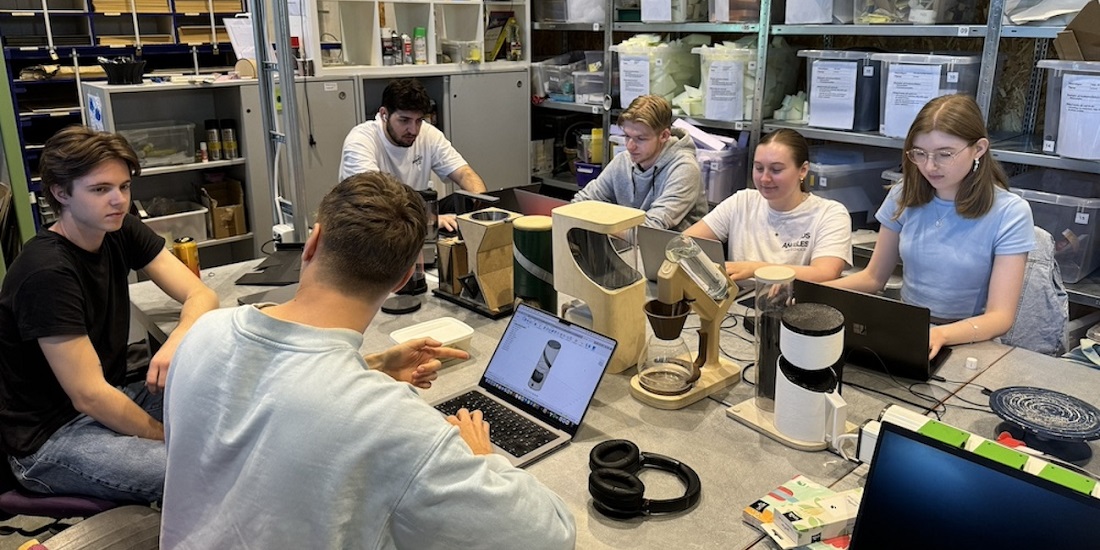AI makes us more creative, but has disadvantages, students say
Youthful creativity is enhanced by artificial intelligence, but students are also asking valid, critical questions about how the technology affects education and learning.
Artificial Intelligence (AI) is making its presence felt in virtually all areas of life.
Some people hail AI as the most important invention since the internet. It will automate tasks previously carried out by humans and provide increased efficiency and accuracy. It will also be able to analyse large volumes of data and provide quick answers, much faster than humans can.
Other people fear that AI lacks empathy and creativity. They foresee ethical challenges and are concerned about data protection. Others fear this new technology will lead to high unemployment and challenging changes in society.
- You might also like: Peering into your heart with the help of AI
Following 208 students
If we are to take all of these predictions about AI seriously, then the opportunities and impacts must be investigated.
As part of the teaching at the Department of Design and the Department of Manufacturing and Civil Engineering at NTNU in Gjøvik, we have studied how AI affects the creativity of the students we teach. We studied a sample of 208 students divided into 37 groups.
Accuracy is absolutely essential in many of the subjects we teach. The students must understand that every detail in products and innovation solutions matters.
A strength of AI is that it helps students come up with many ideas in the ideation phase of project assignments. Some suggestions from AI can verge on the ridiculous, but it is precisely this deviation from strict accuracy that helps expand the creative boundaries for students and teachers.
Careful and strategic use
For example, many students use ChatGPT. By recognizing the content of questions posed by students, ChatGPT can retrieve relevant information that might otherwise take the students a very long time to find, if they could find such answers at all.
These advantages can provide significant benefits in design studies, if used carefully and strategically. We observed this in a study conducted among students who took design courses. The students were given the task of experimenting with ChatGPT during the initial brainstorming phase of a project assignment. The teachers then analysed the students’ reflections and examined their reports.
We compared their answers with those from the previous year, where ChatGPT was not used.
The goal was to find out if AI could provide useful insights that could be used further in the students’ work.
The results showed a marginal but significant improvement in overall report quality and other quality dimensions. The change was small in size or scope, but still important or meaningful for the students’ work.
Improved quality
We also used AI in a design process. The students were tasked with building a prototype of their product proposals. The goal was to find out if AI could provide useful insights that could be used further in the students’ work.
They had to document the results of what was created by AI and assess the extent to which this had affected the final product. The students therefore had to be particularly critical of elements that had been digitally visualized by AI.
The result was a significant improvement in the quality of the visualisations. To some extent, AI introduced new and useful ideas that students could elaborate on.
Engaged and critical students
The students did not simply become passive recipients of AI’s benefits. They were critically engaged and reflected on the consequences of using this type of technology. This was especially evident in their discussions about how AI affects education and learning.
The students were of the opinion that effective use of tools like ChatGPT requires a deeper understanding of the underlying technology.
Instead of a simple debate about whether AI should be allowed in classrooms or not, they discussed how AI could be used responsibly and effectively.
In short, we found the students had a mature approach to new technological tools.
Understanding the challenges
The students were of the opinion that effective use of tools like ChatGPT requires a deeper understanding of the underlying technology. This is key.
The students’ digital judgement is being developed. In order to harness the benefits of AI in creative tasks, it is important that students understand the challenges facing users in a world driven by technology.
Reference: Eleftherios Papachristos, Yavuz Inal, Carlos Vicient Monllaó, et al. Integrating AI into Design Ideation: Assessing ChatGPT’s Role in Human-Centered Design Education. TechRxiv. May 24, 2024. DOI: 10.36227/techrxiv.171656320.09963657/v1





